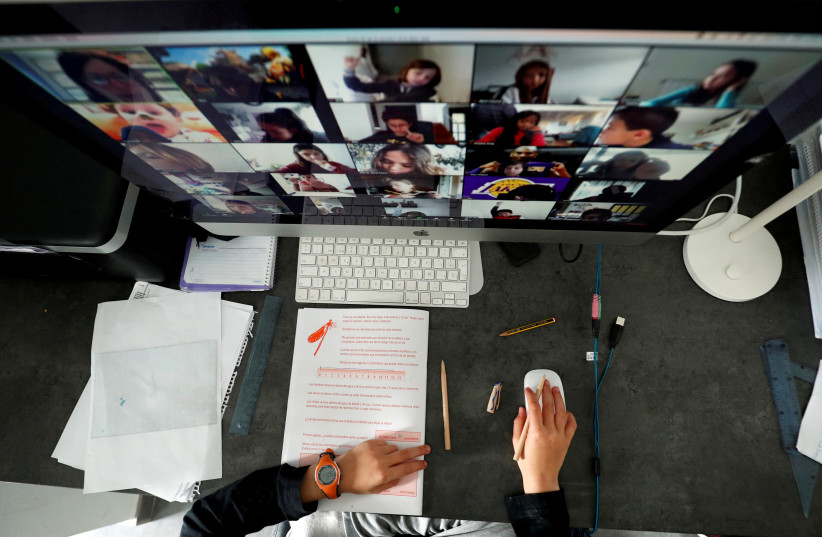Researchers in the United Kingdom have found that a set of specific gestures can significantly improve people's experience in video conferences.
Amid the COVID-19 pandemic, millions of people have switched from face-to-face interactions to video conferencing in order to avoid the spread of the virus. While this comes with numerous benefits, there are also notable drawbacks, such as fatigue due to the lack of necessary social interaction and the inability to convey certain non-verbal gestures such as nods and murmurs.
According to a new peer-reviewed study published in PLOS ONE on Wednesday, certain gestures, such as two thumbs up to signal agreement or a hand over the heart to signal sympathy can improve video conference experiences in a similar way to facial signals such as raised eyebrows but are more visible in this format.
The researchers, led by Paul D. Hills of University College London, tested the set of gestures, called Video Meeting Signals (VMS) on 100 undergraduate students. Half of the students were trained to use the technique then all of them were assigned to two video seminars in groups of about 10 students per seminar. After the seminars, the students completed a survey about their experiences.
According to the study, students who had completed the VMS training gave significantly higher ratings compared to those who hadn't been trained regarding their personal experience, feelings toward the seminar and perceived learning outcomes. Furthermore, they were more likely to use positive language and less likely to use negative language.
Emojis not as effective
In a second experiment, a condition was added that rather than gestures, students were taught to use emojis. However, these participants did not experience the same positive results as the students who had been trained to use VMS, according to the study.
“By exploiting the specific benefits of gestural communication, VMS has great potential to overcome the psychological problems of group video meetings,” the researchers said.

Three aspects of training
In the study, the researchers said that VMS training had been beneficial to the students who participated in the experiment, as they had better personal experiences, interacted more effectively with one another, developed close relationships with their peers and believed that they had learned more.
The researchers noted that although they could not conclusively determine why VMS training improved the participants' experiences, they speculated that three aspects of training - values, information and actions - could contribute to this phenomenon.
- Values: During training, the participants discussed values that they agreed with, such as the importance of committing to the process of a group meeting and the importance of interacting with each other. Irrespective of the VMS techniques used, the simple act of discussing and promoting these values may have shaped the students' interactions in a positive manner.
- Information: It is also possible that the information that the students convey through their gestures could potentially lead to a more positive outcome. Students can often get an idea of how many people agree or disagree with a certain point could increase the participants' sense of sharing common ground with their peers.
- Actions: Finally, the specific action that is done when using the signals could also be the cause of the positive outcome. As the signals are similar to common gestures such as thumbs up and waving that the students are likely already familiar with. They can occur simultaneously while talking or listening and show more engagement with the conversation than emojis.
Hill's remarks
“Our research indicates that there’s something about the use of gestures specifically which appears to help online interactions and help people connect and engage with each other.”
Paul D. Hills, University College London
“Our research indicates that there’s something about the use of gestures specifically which appears to help online interactions and help people connect and engage with each other,” Hills said. “This can improve team performance, make meetings more inclusive and help with psychological wellbeing.”
